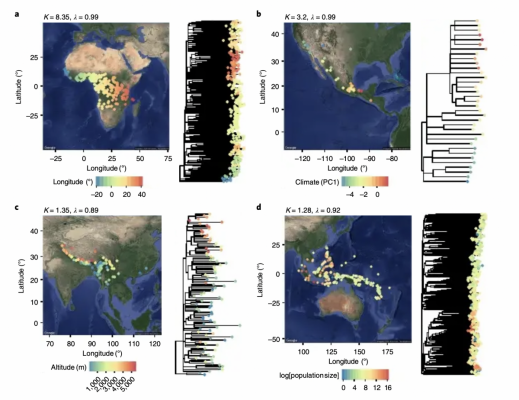The evolution of language families is shaped by the environment beyond neutral drift

There are more than 7,000 languages spoken in the world today. It has been argued that the natural and social environment of languages drives this diversity. However, a fundamental question is how strong are environmental pressures, and does neutral drift suffice as a mechanism to explain diversification? We estimate the phylogenetic signals of geographic dimensions, distance to water, climate and population size on more than 6,000 phylogenetic trees of 46 language families. Phylogenetic signals of environmental factors are generally stronger than expected under the null hypothesis of no relationship with the shape of family trees. Importantly, they are also—in most cases—not compatible with neutral drift models of constant-rate change across the family tree branches. Our results suggest that language diversification is driven by further adaptive and non-adaptive pressures. Language diversity cannot be understood without modelling the pressures that physical, ecological and social factors exert on language users in different environments across the globe.